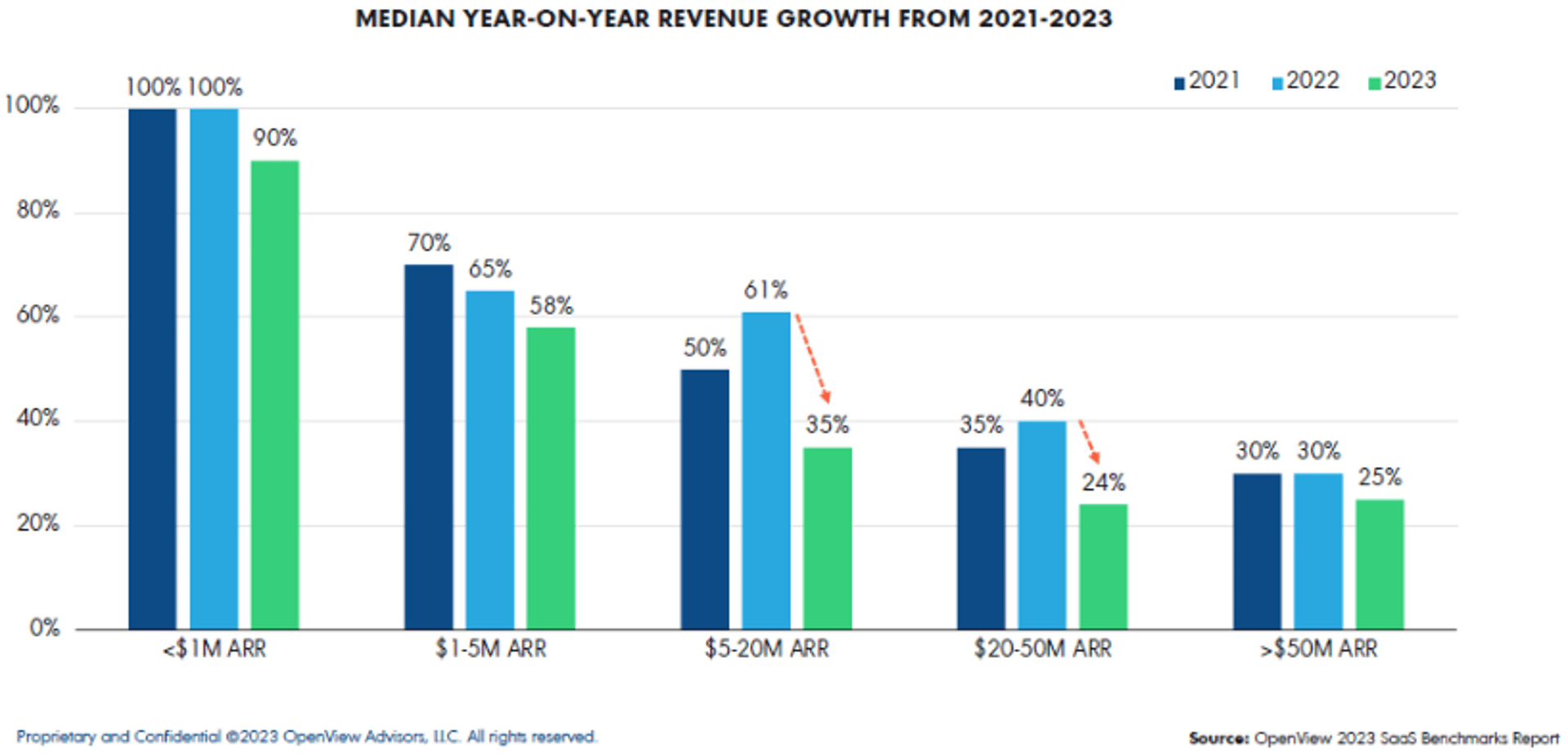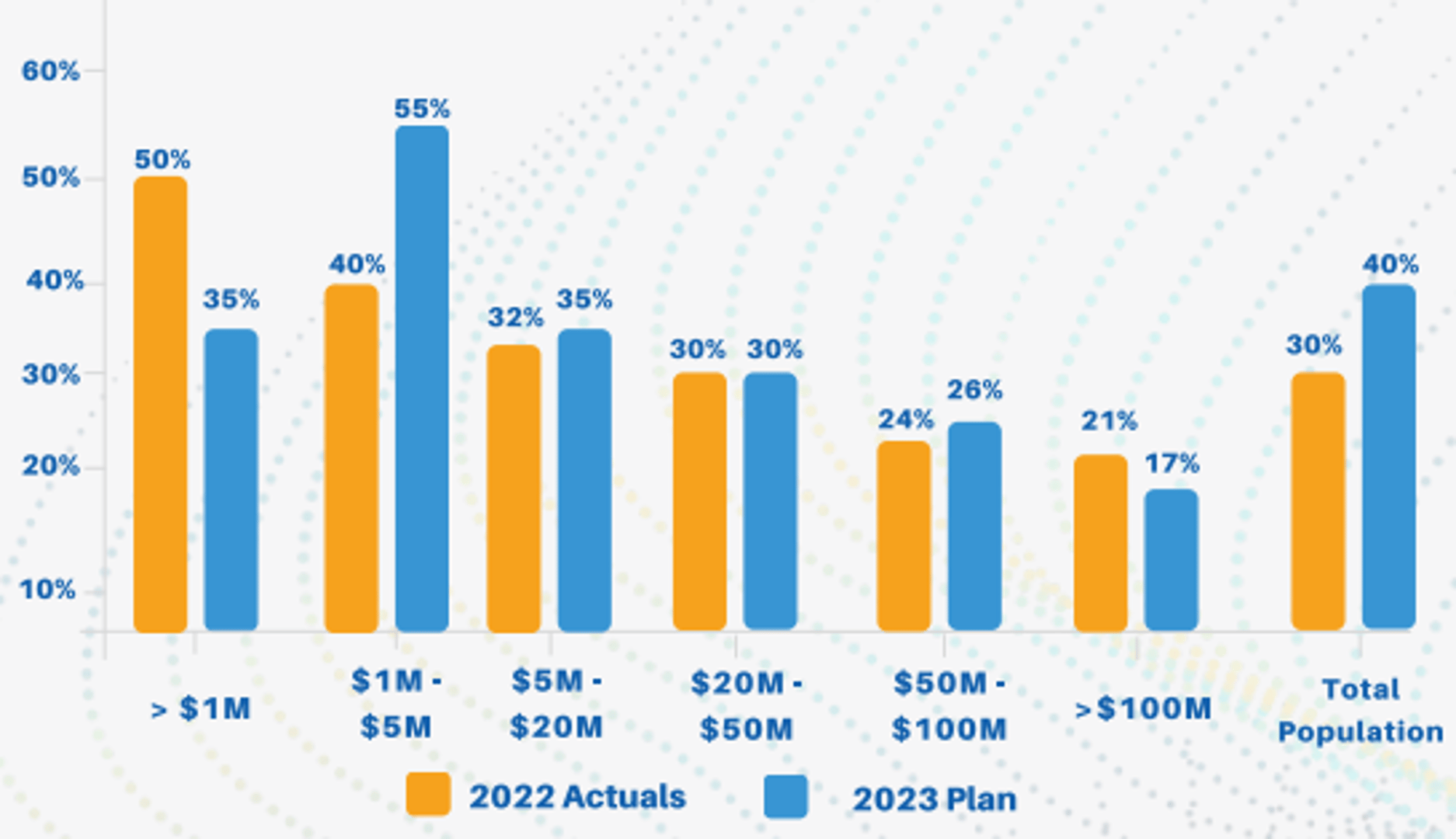ARR Growth Rate
Last updated: Mar 18, 2024
What is ARR Growth Rate?
ARR Growth Rate is the change in annual recurring revenue over a given period, typically represented in a percentage. Steadily increasing ARR growth rate year over year is usually indicative of product-market fit.
ARR Growth Rate Formula
How to calculate ARR Growth Rate
A SaaS business saw an increase in ARR from the previous year at $2 million to $3.5 million ARR at the end of this year. The ARR Growth Rate for this business at the end of this year is ($3.5m - $2m) / $2m which is 75%.
Start tracking your ARR Growth Rate data
Use Klipfolio PowerMetrics, our free analytics tool, to monitor your data.
Get PowerMetrics FreeWhat is a good ARR Growth Rate benchmark?
For SaaS companies at 1-5M in ARR, the median YoY ARR Growth Rate is between 52% and 59%, and the top quartile is between 102% and 154%. For SaaS companies at 5-15M in ARR, the median YoY ARR Growth Rate is between 46% and 55%, and the top quartile is between 100% and 131%. Capchase 2022, n=439. According to Benchmarkit, Growth rates fell from the hyper-growth levels in 2021 and is closer to the reduced levels of growth experienced in 2020. Growth rates decreased across every company size with a median growth rate of 30% in 2022 versus 42% in 2021. Benchmarkit 2023, n=690.
ARR Growth Rate benchmarks
Revenue Growth by ARR

Planned Growth Rate by Revenue

How to visualize ARR Growth Rate?
You want to have your company's growth rate ready to share at any given time, so it's best to visualize your ARR Growth Rate with a Summary Chart, also referred to as the "metric view". You can opt to compare growth with a previous time period, such as year-over-year, to demonstrate improvement in growth rate compared to the past. Check out the example to see how a typical SaaS company would track and measure their ARR Growth Rate:
ARR Growth Rate visualization example
Summary Chart
ARR Growth Rate
Chart
Measuring ARR Growth RateMore about ARR Growth Rate
ARR Growth Rate is a growth metric often used to measure percentage growth in subscription revenue model businesses. Frequently used as an internal measure of growth in SaaS companies, ARR Growth Rate is calculated by dividing the difference between Annual Recurring Revenue (ARR) at the end of a given time period and beginning of the same time period, by the ARR at the end of the period. It is expressed as a percentage.
By tracking ARR Growth Rate, you gain insight into the velocity at which your business is growing and the ability to identify and address potential roadblocks and decline in growth. Drops in ARR Growth Rate can be remedied in many ways, examples include: reducing churn, increasing S&M spending at a fixed LTV:CAC, expanding to new markets, and increasing your ARPU/ACV.
How to calculate your company's growth rate
Change in revenue over time is usually the first metric people refer to when calculating company growth rate. However, you can choose from gross profit, gross sales, new users added, or NRR to measure company growth as well. Investors often look at the growth rate of your company to determine if they want to spend time assessing your company for investment. Metrics like ARR Growth Rate can be a great place to start for SaaS companies wishing to analyze their annual revenue growth.
ARR Growth Rate Frequently Asked Questions
How do you calculate ARR?
What is growth rate in business?
Growth rate in business most commonly refers to the percentage change in revenue, year over year. In SaaS businesses, growth rate is calculated by measuring the change in Monthly Recurring Revenue (MRR) or Annual Recurring Revenue (ARR) over time. Growth rates are used to communicate the overall success of a business to internal and external stakeholders.
Recommended resources related to ARR Growth Rate
Here’s a great article about the ARR Growth required for a SaaS company to go public.Contributor
